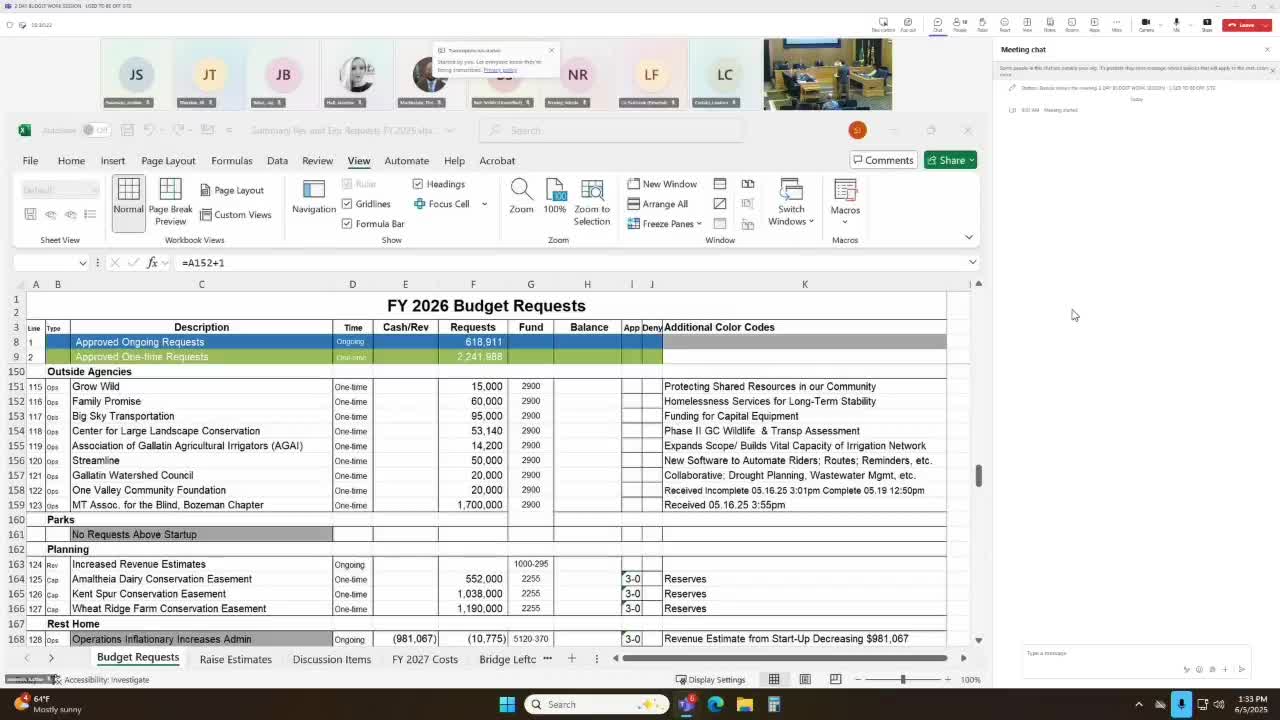Gallatin County Regional Housing Coalition develops comprehensive homelessness strategy
June 06, 2025 | Gallatin County, Montana
This article was created by AI summarizing key points discussed. AI makes mistakes, so for full details and context, please refer to the video of the full meeting. Please report any errors so we can fix them. Report an error »

Gallatin County is taking significant strides in addressing homelessness through a collaborative initiative aimed at aligning regional partners and resources. During the recent budget meeting, officials highlighted the progress of the "Unhoused to House Initiative," a work group formed under the Regional Housing Coalition (RHC). This initiative has conducted a comprehensive needs assessment and developed a regional strategy to tackle homelessness across Gallatin County.
Key to this effort is the alignment of jurisdictional partners, which aims to ensure that funding and resources are effectively coordinated. The RHC has also received federal designation as the region's continuum of care, enhancing its capacity to manage resources and improve the effectiveness of the local response to homelessness.
In addition to strategic planning, the coalition is finalizing its annual report, which will track goals and metrics to measure its effectiveness over time. A countywide housing dashboard is also in development, thanks to pro bono support from a systems and analytics firm. This dashboard will provide a visual representation of affordable housing developments and key metrics, helping to educate the public and foster informed discussions about housing issues in the community.
Moreover, a communications work group has crafted a plan to unify messaging among various organizations involved in housing efforts. This initiative aims to enhance public understanding and discourse surrounding homelessness and affordable housing.
The meeting also included a funding request of $20,000 to support these ongoing efforts. The importance of the RHC has been recognized by local entities, including the city of Bozeman and Bozeman Health, which have integrated support for the coalition into their community health improvement plans.
As Gallatin County continues to confront the challenges of homelessness, these initiatives represent a concerted effort to create a more effective and collaborative approach to housing solutions. The ongoing support from community stakeholders will be crucial in sustaining this momentum and achieving tangible outcomes for residents in need.
Key to this effort is the alignment of jurisdictional partners, which aims to ensure that funding and resources are effectively coordinated. The RHC has also received federal designation as the region's continuum of care, enhancing its capacity to manage resources and improve the effectiveness of the local response to homelessness.
In addition to strategic planning, the coalition is finalizing its annual report, which will track goals and metrics to measure its effectiveness over time. A countywide housing dashboard is also in development, thanks to pro bono support from a systems and analytics firm. This dashboard will provide a visual representation of affordable housing developments and key metrics, helping to educate the public and foster informed discussions about housing issues in the community.
Moreover, a communications work group has crafted a plan to unify messaging among various organizations involved in housing efforts. This initiative aims to enhance public understanding and discourse surrounding homelessness and affordable housing.
The meeting also included a funding request of $20,000 to support these ongoing efforts. The importance of the RHC has been recognized by local entities, including the city of Bozeman and Bozeman Health, which have integrated support for the coalition into their community health improvement plans.
As Gallatin County continues to confront the challenges of homelessness, these initiatives represent a concerted effort to create a more effective and collaborative approach to housing solutions. The ongoing support from community stakeholders will be crucial in sustaining this momentum and achieving tangible outcomes for residents in need.
View full meeting
This article is based on a recent meeting—watch the full video and explore the complete transcript for deeper insights into the discussion.
View full meeting
